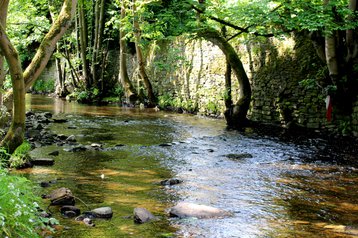Sustainability is, in its essence, the bringing together of the technological, and the natural.
The two must work together, with neither taking more from the other than it gives in return. Once that balance, that synergy is achieved, an industry can truly consider itself sustainable.
Lex Coors is a well-known figurehead of sustainability in the data center industry and is always looking for new ways to innovate and meet ever more ambitious goals. In a fireside chat with DCD, and Max Schulze from the Sustainable Digital Infrastructure Alliance, we talked about their latest project in a mine called Galerie de la Mer, in Marseille, which won the Carbon Champion Award at the DCD>Global Awards in 2021.
“We have a social and corporate responsibility to be extremely serious about sustainability projects,” said Coors. “We [Interxion] are known for the use of aquifer cooling and seawater cooling, and our large plants have free cooling just by air.
“The corporate view is about always trying to find the right thing to do, without disrupting or influencing the microclimate around us. It's easy to take water or whatever you need, heat it up, and throw it back into nature. That's something that we're always very conscious of not doing here.”
Unfortunately, not just ‘throwing it back into nature’ is not always the top priority of businesses. Max Schulze also touched on the importance of this.
“Even the cooling water of the nuclear power plants doesn't get injected back into the ocean or the lakes around it, it goes first into a cooling lake. You let the water cool down naturally, and then you put it back into the water because otherwise, you're messing with the biodiversity of the water. You are raising the temperature, and fish die. There's always a consequence of injecting.”
“To be honest, that's why I always made fun of the project from Microsoft which involved putting data centers into the ocean. Part of climate change is not having to raise the temperature of our oceans, and you're putting it directly into the water. “
The Galerie de la Mer, obviously, does not do this. The site was originally an old mine, functioning between 1885 and 1907. It was then closed, but the water kept flowing from the mine to the sea, and it is this water that Interxion intends to use for cooling.
Using natural water for cooling is nothing new. As Schulze pointed out, he and Lex come from the country that has pioneered energy storage with water: the Netherlands.
“If you look at what greenhouses have been doing, they actually require the same heat temperature that data centers produce, and because they require so much heat, they actually store it in underground water storage systems.
“They've been saving on energy costs significantly because in the summer when it's too hot, they store some of the heat, and then in winter, they heat the greenhouse with that stored heat. The same can be done with cooling. In a way, Lex found natural cold storage, and he can leverage that. But in principle, a lot of data centers could build something artificially like this as well. Greenhouses have been doing this for four years.”



